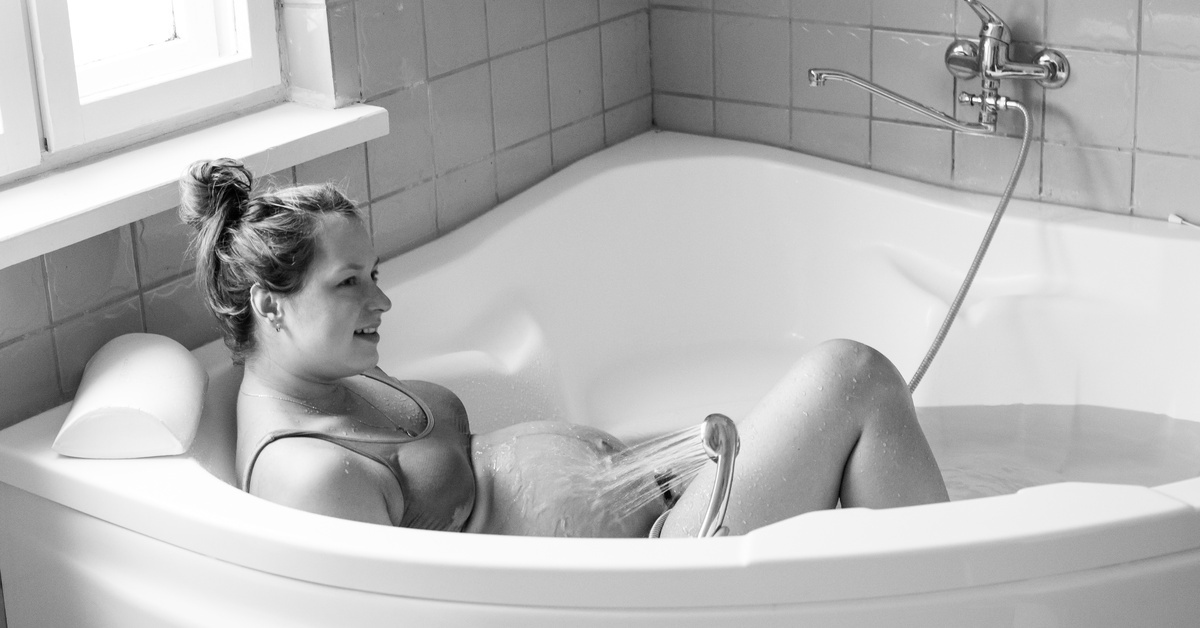Comparing Different Types of Home Birth Pools
When you're planning a home birth, the right environment can shape the entire experience for your birthing parent and their support team. Comparing different types of home birth pools matters because the pool you choose affects comfort, safety, and the practical logistics of the birthing day itself. Your setup influences everything from water temperature control to post-cleanup ease. This guide walks you through the main options so you can help your clients make an informed decision that fits their space and needs.
Understanding the Role of Water in Home Birth
Water during labor offers real, measurable benefits for birthing parents. Warm water eases muscle tension and reduces pain perception. Your nervous system responds differently when immersed in water at the right temperature. Many birthing parents report feeling more in control and mobile in a pool, which can help them move through labor more effectively.
Beyond comfort, water supports freedom of movement. In a pool, a birthing parent can easily change positions, something that becomes harder as labor progresses. They can float, squat, kneel, or lean against the sides without the same physical strain they'd experience on land. This mobility matters because movement often helps labor progress.
The privacy and calm that water creates also deserves mention. Many birthing parents feel more secure in a contained space where they can regulate who sees them and when. The water creates a sensory boundary that feels protective.
Water birth supplies come in different forms, but they all serve the same core purpose: providing a comfortable, controlled environment for laboring parents. When you understand how water supports labor, choosing between pool types becomes clearer. You're selecting the foundation for how your client experiences their labor and delivery.
Inflatable vs. Rigid Birth Pools

This debate is one of the most significant decisions you'll face when helping your clients choose a pool. Both options work, but they differ in ways that matter for your practice.
Inflatable pools offer flexibility and affordability. You set them up when labor starts or right before, so your client doesn't need to reserve space in their home months in advance. They deflate and pack away easily, and they cost significantly less than rigid pools, usually a few hundred dollars instead of over a thousand. Inflatable pools also move easily from room to room if your client wants to change locations during labor.
The trade-offs exist, though. Inflatable pools can puncture or develop slow leaks, which creates stress nobody needs during labor. They take time to fill with warm water, and maintaining temperature throughout labor requires active monitoring. The walls don't provide as much support as rigid options, and the vinyl material can feel less sturdy under your hands as you provide physical support.
Rigid pools, typically made from fiberglass or acrylic, offer durability and stability. They hold temperature better because of the thicker materials, and the solid walls give you something substantial to work with when providing support or assistance. They feel more permanent and secure, which some birthing parents prefer. Many rigid pools come with jets or heating systems, giving you better temperature control during labor.
Rigid pools demand more commitment. Your clients need a dedicated space, either in a bedroom, bathroom, or another room. Installation often requires professional help, and they're pricey. Once in place, they stay there, which works perfectly if your client wants a home birth aesthetic, but creates logistical challenges if they change their minds or move homes.
For your practice, consider your typical client base. If most of your clients labor at home and want minimal setup stress, inflatables make sense. If your clients prioritize temperature stability and want the pool as a permanent fixture, rigid pools suit them better. Many practitioners work with both and let clients choose based on their priorities and budget.
Key Features That Affect Your Decisions
When you evaluate pools for your clients, certain features deserve your attention. Understanding these elements helps you match the right pool to each client's situation and preferences:
- Size and depth: Larger pools give birthing parents more room to move, but they take longer to fill and use more water. Standard depth ranges from 18 to 24 inches, shallow enough to prevent safety concerns but deep enough for submersion and comfort.
- Heat source and temperature control: Inflatables often rely on external heaters or don't heat at all; rigid pools frequently include built-in heating. Temperature control determines whether your client stays comfortable throughout labor, which directly affects their pain management and ability to relax.
- Portability and storage: You can pack inflatable pools into a bag; rigid pools require permanent space. This choice affects your client's flexibility in where and how they give birth.
- Ease of filling and draining: Some pools use garden hoses and take one to two hours to fill and drain. Others connect to existing plumbing for faster setup. Quick drainage afterward reduces cleanup stress.
- Material durability: Rigid pools last for decades; inflatables typically last 2 to 3 years with regular use before degradation.
- Support and stability: Rigid pools offer fixed walls; inflatables flex. Your hands need something solid to work against when providing comfort and support.
These features interconnect. A large, rigid pool with heating offers stability but requires significant investment and space. A smaller inflatable pool costs less and stores easily, but demands more active temperature management.
Setting Up Your Client for Success

Once your client selects their pool type, the setup process determines whether the labor goes smoothly or whether you spend energy troubleshooting instead of providing care.
If your client chooses an inflatable pool, arrive with enough time to fill it before active labor intensifies. You'll need access to warm water, either heated by an external heater or gradually heated from the tap. Have backup heating methods ready in case the primary heater fails. Test the pool's integrity before the delivery date to address any punctures or leaks.
Position the pool where your client wants it, but stay flexible. Sometimes a birthing parent's needs shift during labor. Make sure you can access all sides easily for support, and ensure adequate lighting so you can see what's happening.
The room temperature should stay comfortable for you both, cool enough that you don't overheat while wearing layers, but warm enough that the birthing parent doesn't feel chilled.
For rigid pools, verify that any heating system functions properly before labor and delivery. Test water circulation and temperature controls. If the pool connects to existing plumbing, confirm those connections work and won't leak. Ensure you have towels, waterproof supplies, and emergency access to the pool in case you need to help someone out quickly.
Regardless of the pool type, keep clean water readily available for rinsing, and establish your communication plan if the birthing parent wants to exit the pool quickly. Stock your water birth supplies within arm's reach. You shouldn't have to leave the side of the pool searching for what you need.
Choosing Your Pool: A Summary for Your Practice
Choosing between different types of home birth pools comes down to your clients' needs, your practice style, and your available resources. Neither option stands universally superior; they serve different situations and preferences.
Inflatable pools work beautifully for clients who want flexibility, affordability, and minimal home modifications. They suit practices serving diverse clients with varying spaces and budgets. Rigid pools serve clients who want permanence, stability, and sophisticated temperature control. They appeal to birthing parents planning home births as part of their lifestyle and philosophy.
Many experienced practitioners can manage both options and make recommendations based on an individual client’s circumstances. You might suggest an inflatable pool to a first-time client unsure of their preferences, or recommend a rigid pool to someone who wants multiple children and knows they prefer water births.
The most important factor is ensuring your client feels prepared, supported, and safe. When you understand the strengths and limitations of each pool type, you can guide your clients toward the choice that best serves them on their birthing day.
Comparing different types of home birth pools isn't about finding one perfect answer; it's about matching the right tool to each unique situation and person you serve. Discover the right home birth supplies for every unique birth experience at Cascade Health Care.
Recent Posts
-
Must-Have Tools and Instruments for Obstetric Care
Obstetric care demands a unique blend of clinical expertise, intuitive patient management, and preci
-
Positions for Out-of-Bed Laboring During a Home Birth
For midwives, doulas, and other healthcare professionals who attend home births, facilitating a safe



